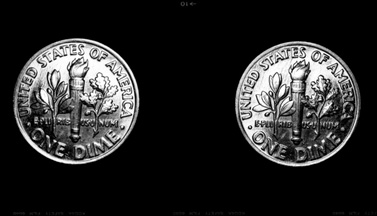Camera with matched pair of 65mm F6.3 Micro Tessar lenses, reflex viewing, built-in point light source illumination, w/12 shot glass plate film magazine, pre war vintage, serial number 82, truly a rare piece, Ex, $2500 The optical viewing system has a focusing objective lens. There is a newly cleaned, lubed and adjusted Compound shutter behind the 2 taking lenses. There is a focusing point light source system with a 3 dimensional alignment system. The below images are of the camera from the side, with the point light source light on. The point light source emanates from the left side. The center is the camera body. The right is the optical viewing system. On the far right is a geared focusing system and beyond that is a custom made cylindrical adapter with 1/4-20TPI standard photo threaded hole for mounting on most tripods or copy stands. For these photos, the camera is mounted on a camera stand arm.This camera was initially designed to photograph the human eye. The diagram and illustraton are from literature a German customer obtained for me from the Zeiss factory. That literature including a letter from Zeiss on the Zeiss letterhead is included with the outfit. Dates of 1928 and 1935 are mentioned in the letter. The letter also details what literature was included.
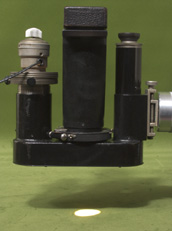
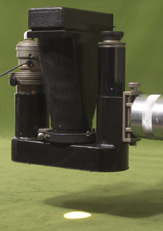
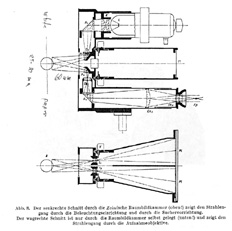
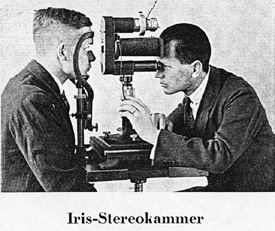
The below images are of the working end of the camera. There is a protective glass window covering the hole in the working end of the camera. Behind that protective glass cover, on the left is the condenser system that funnels light from the point light source bulb to the subject. This image is illuminated with a strobe light, so the point light source bulb appears warm colored. In the middle are the 2 taking lenses. On the right is the subjective end of the optical viewing system. And, of course, the other image shows the full force of the focused point light source.

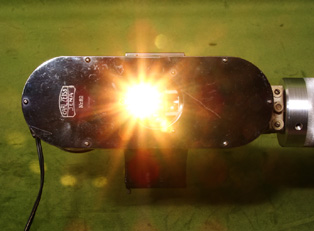
The camera came in with a burned out standard screw base point light source bulb. Durst supplied such bulbs, code named "PULAM." The PULAM requires a power supply, also available from Durst. Because I had on hand a Nuarc power supply, point light source bulb and bayonet base to screw base adapter, I used that both for the photos of the dime and for the above photos of the camera with light source in operation. That Nuarc system has a 0-60 second timer and a 6 level power supply and is equal to the Durst. The Durst system will cost you about $2000 if still available new. The illustrated used Nuarc system is available for $600. The Nuarc sytem is illustrated below with a view of the opposite side of the camera.
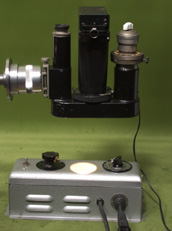
Below find images of a dime that I photographed with the camera. I found that a 6X12cm rollholder neatly sits atop the camera, so I used 120 rollfilm for convenience, although it is quite possible to cut sheet film backed up with spacers to fit the glass plate magazine, which uses 44X107mm sheet film or plates and produces 40X105mm images. The 1st image below is approximately the 120 film size that I used--with the image of the dime 2X life size. The dime is a rather specular subject for point light source illumination--so the end result is more specular than spectacular, but it does give you an idea of the lens' resolving ability. Stereo afficionados tell me that you have to reverse the 2 images to get a true stereo effect. I did not do that; the 2 images are as found on the film. There is a lot more detail in the film than you see on the screen; in addition to downsizing the images for the screen, the scanner I used is an older one with relatively low resolution and D-max. The 3rd image is not downsized; even though it is of a small protion of the image, the large version of the 3rd image is a very large file, so do not click on it unless you have a broad band internet connection and lots of RAM.
